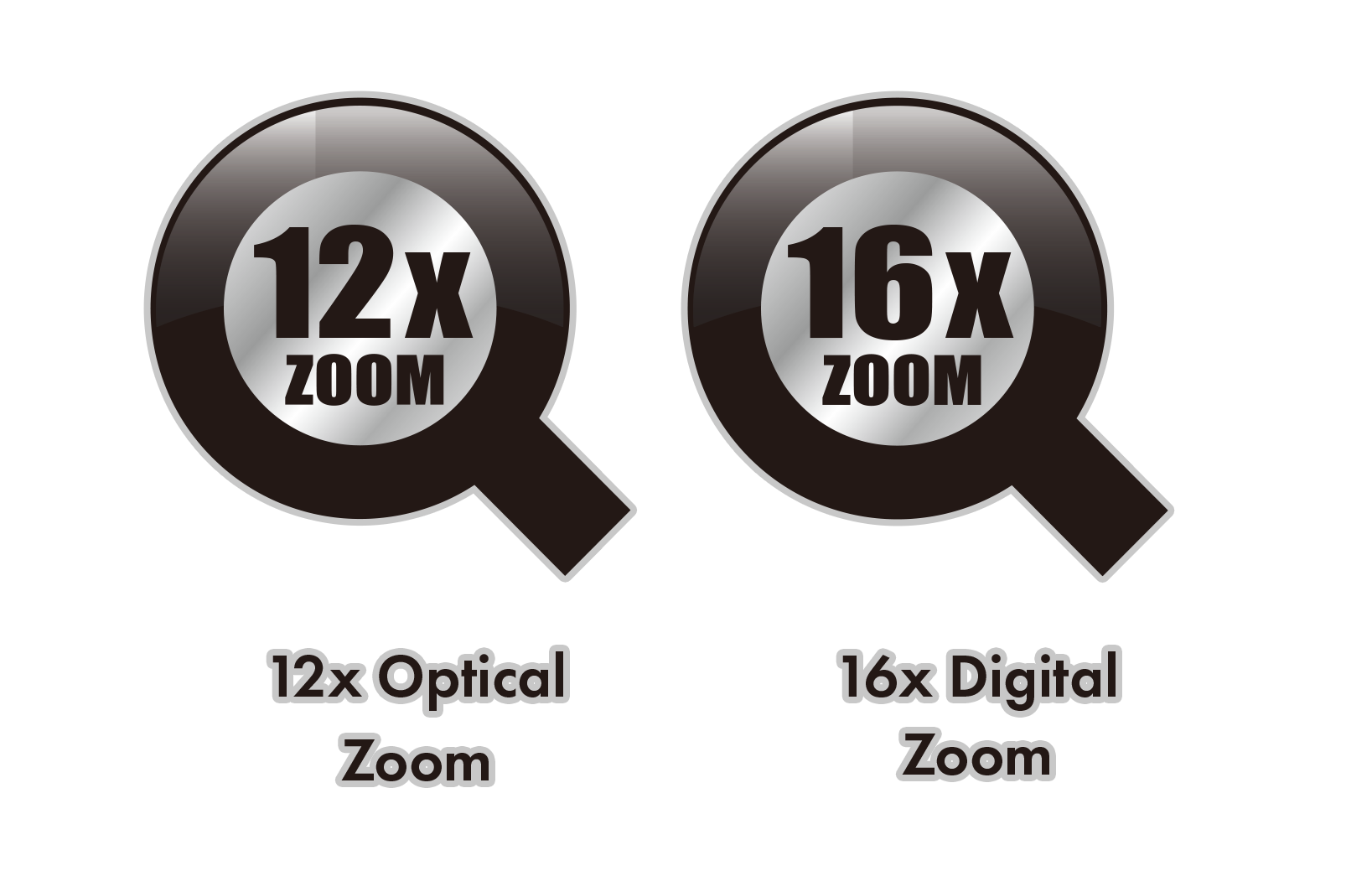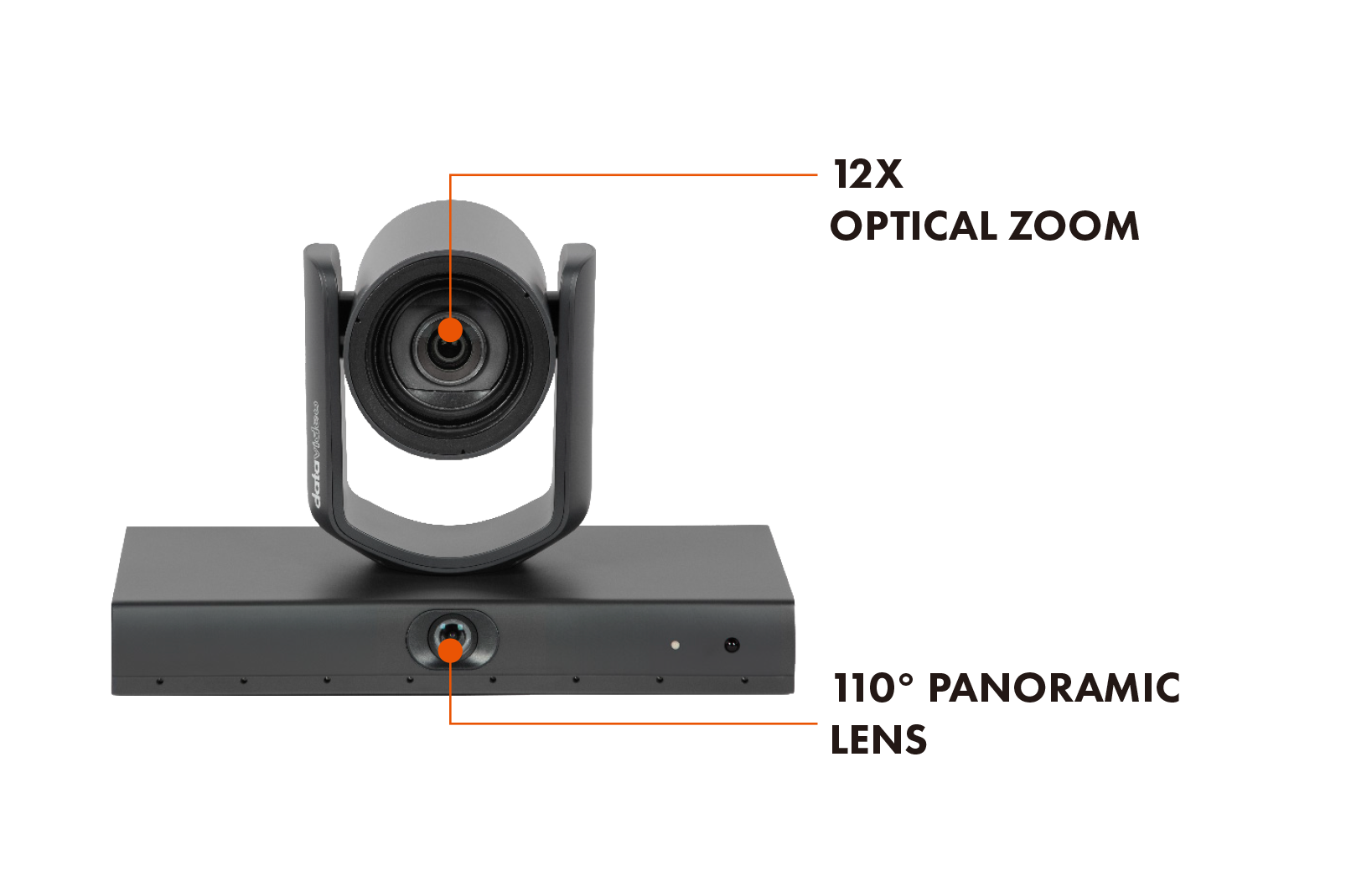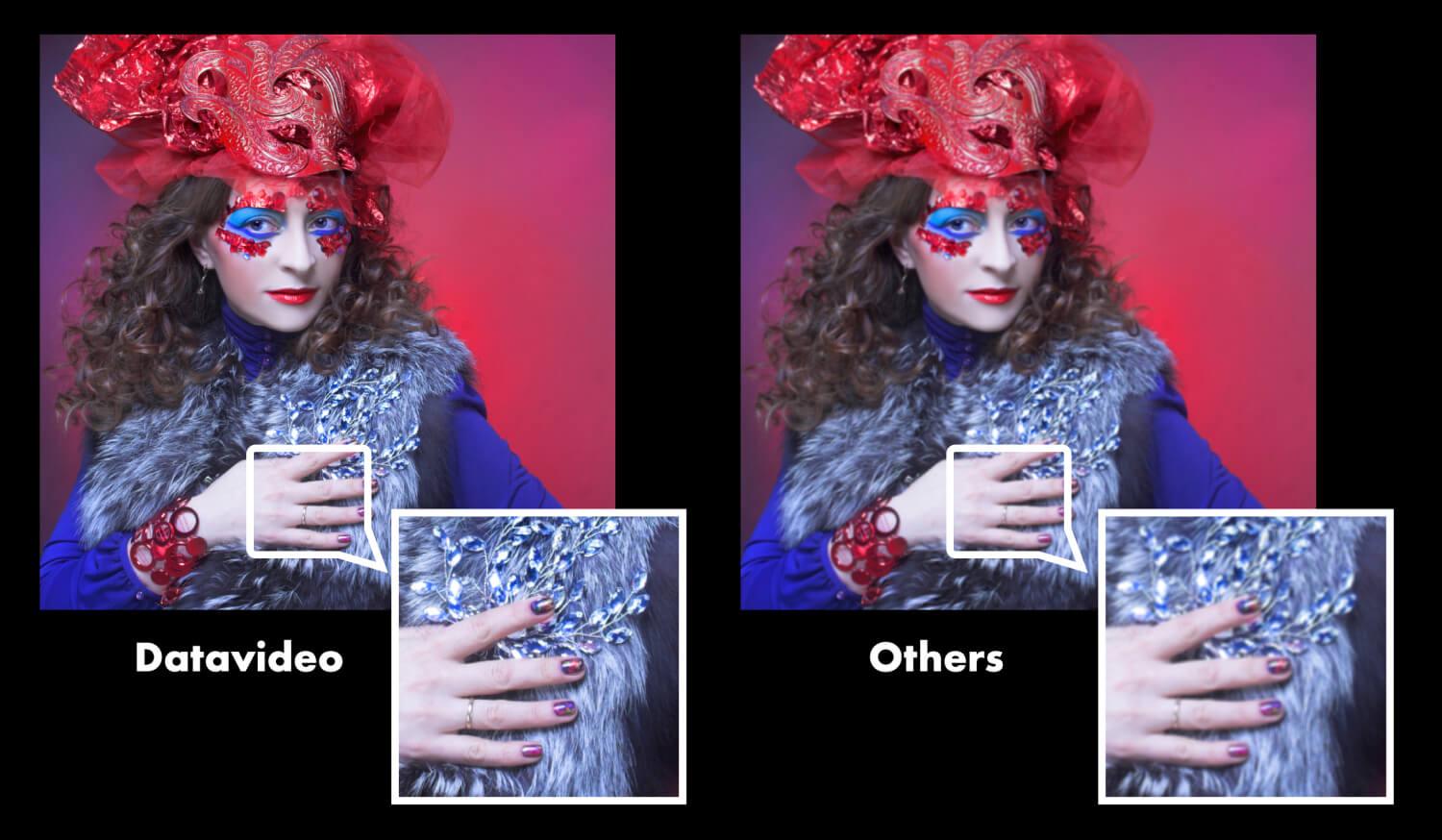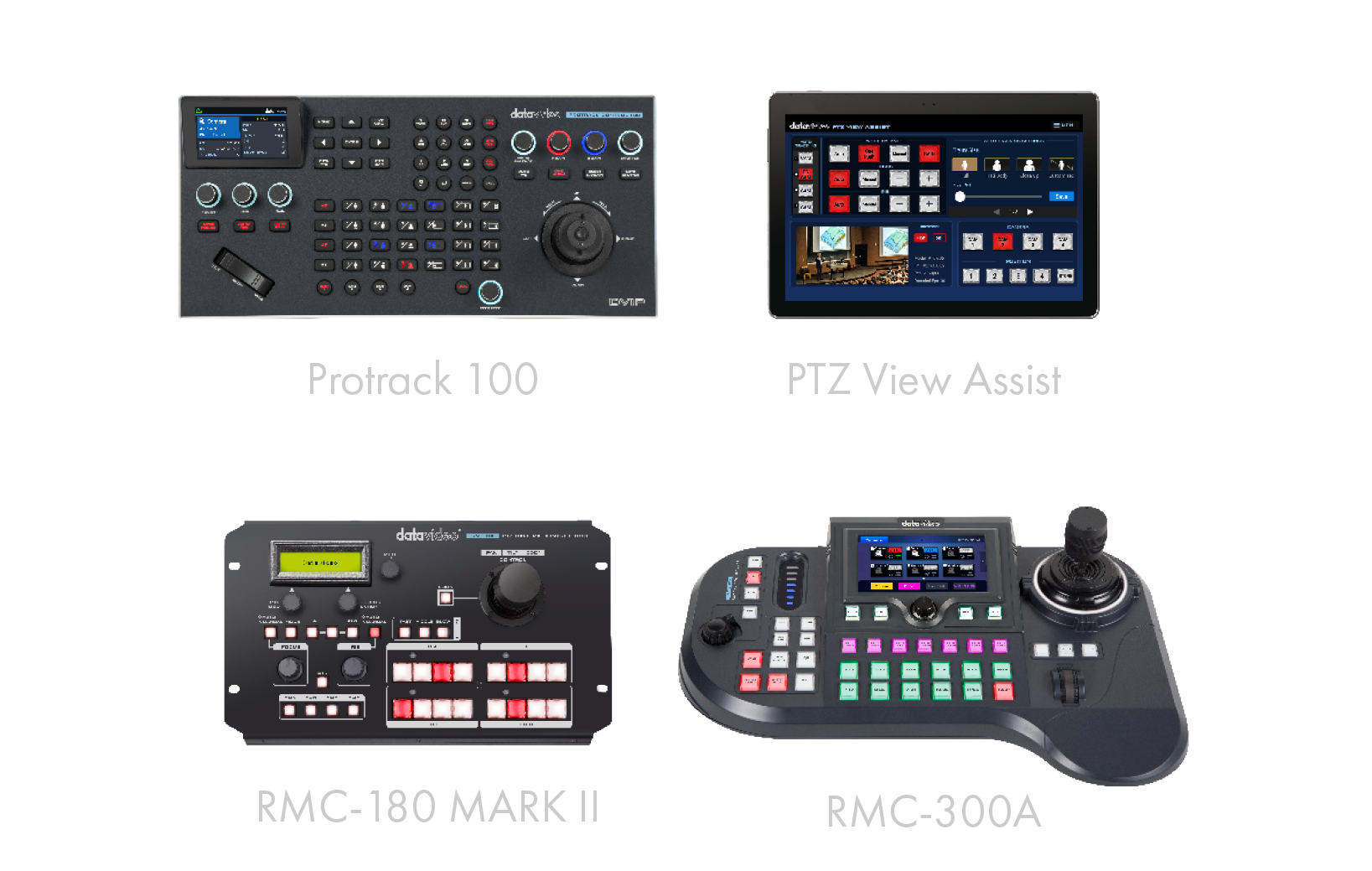The VTC-100 is an AI-powered voice tracking camera with a dual-lens design—combining a wide panoramic view and a close-up PTZ lens. It automatically detects and frames the active speaker in real-time, delivering smooth, professional video without manual control. Ideal for hybrid meetings, classrooms, and live presentations.
Supports SDI, HDMI, and UVC video output. Built-in H.264, H.265, and Motion JPEG encoding allows simultaneous live streaming to two platforms, meeting both on-site and online playback requirements.

Dual-lens system ensures precise subject tracking.

Broadcast-grade 1/2.8” CMOS sensor delivers Full HD at 60fps.

SDI, HDMI, UVC, and NDI|HX3 support, plus built-in streaming.

Operate via controllers, apps, switchers, or web UI.
Datavideo PTZ cameras utilize high-quality Sony CMOS sensors to deliver exceptional image quality and reliability. Renowned for their performance in various lighting conditions, Sony CMOS sensors are widely used in broadcast, cinematic, and professional video cameras. Additionally, these sensors offer lower power consumption, which leads to reduced heat generation and a longer camera lifespan.
The Datavideo VTC-100 is equipped with a 12X optical zoom lens, allowing you to capture crisp, detailed close-ups without sacrificing image quality. Whether you're filming in a studio, classroom, or conference environment, the 12X zoom provides the flexibility to frame your subject perfectly from a distance—ideal for presentations, panel discussions, or huddle room where space and camera placement vary. This professional-grade zoom capability ensures sharp, natural-looking footage even at full zoom, making the VTC-100 a reliable choice for high-quality video conferencing.


The dual-lens camera technology to accurately identify the subject's position and movement track. Even in complex environments, it ensures stable tracking. The secondary lens offers an ultra-wide-angle view, enabling output of HD footage of the entire scene.
The Datavideo VTC-100 is a professional-grade video camera designed to provide crystal-clear high-definition imags. Engineered with precision optics and advanced processing technology, the VTC-100 ensures that every frame is captured with outstanding clarity, vibrant colors, and exceptional detail.
Ideal for conferencing, education, corporate presentations, and live event production, the VTC-100 integrates seamlessly into multi-camera workflows. Its ability to consistently deliver sharp, high-definition video makes it a reliable choice for both professional broadcasters and AV system integrators.

The built-in 8-microphone array accurately detects voice direction. Once a voice is identified, the panoramic lens confirms the speaker’s location, and the PTZ lens locks in with fluid, cinematic framing—creating an immersive and lifelike video experience.

The VTC-100 can swiftly and accurately detect the direction of a speaker’s voice. Once the voice source is identified, the lower panoramic lens immediately verifies whether a speaker is present in that direction and confirms their position. The upper close-up lens then automatically adjusts with remarkable smoothness, precisely and clearly framing the speaker at the center of the screen, while seamlessly switching between the panoramic and close-up views.

Everything happens automatically—the VTC-100 can seamlessly track each speaker no matter where they are within the frame. This not only greatly enhances meeting efficiency but also ensures that every participant enjoys the best possible viewing experience, as if they were right there in the room.
Unique to the VTC-100, this mode detects the direction of the active speaker’s voice and automatically switches the camera to focus on that person.


The camera intelligently detects the number of people in the scene and adjusts the framing to keep everyone centered in the shot.
Ideal for single-presenter scenarios, this mode allows you to designate a specific individual for precise and continuous tracking.


Define specific zones to trigger or restrict tracking. The camera adjusts its framing and tracking behavior based on the selected zones.
Works seamlessly with RMC-2P, RMC-180, RMC-300 series, Protrack 100 and the PTZ View Assist App for enhanced live control and preset recall.


NDI Pan Tilt Zoom cameras offer several advantages for various applications, particularly in the realm of video production, broadcasting, live streaming, and video conferencing. NDI, or Network Device Interface, is a technology developed by NewTek that allows video and audio to be transmitted over a network, making it easier to integrate and manage multiple devices.
With NDI PTZ cameras, you can easily set up a multi-camera production environment, enabling you to capture different angles and perspectives for more dynamic and engaging content. Here are some reasons why using NDI PTZ cameras can be beneficial:

NDI PTZ cameras provide high-quality video and audio transmission over a network, enabling crisp and clear visuals for broadcasting, streaming, or video conferencing.

NDI technology allows for easy setup and scalability, enabling you to add and manage multiple cameras seamlessly.

By utilizing a network for video and audio transmission, you reduce the need for multiple cables, simplifying the setup and reducing cable clutter in your workspace.

NDI PTZ cameras are designed for remote control of pan, tilt, and zoom functions, offering flexibility in camera positioning and framing without physical intervention.

NDI is a widely adopted standard in the industry, ensuring compatibility with various video production and streaming systems. This interoperability enhances flexibility and options for integrating the cameras into your existing workflow.

NDI PTZ cameras can be a cost-effective solution, especially when considering the reduced cabling and infrastructure requirements. They also offer a versatile alternative to stationary cameras.
Datavideo's PTZ camera series now supports NDI (Network Device Interface) features, enhancing their versatility and integration capabilities. With NDI, these cameras can transmit high-quality, low-latency video over IP networks, making them ideal for live production environments. The implementation of NDI utilizes the DVIP (Datavideo Protocol) ports, ensuring seamless connectivity and control. This advancement allows users to leverage the flexibility of IP-based workflows, simplifying setup and reducing the need for additional cabling, ultimately streamlining the production process.

The VTC-100 supports PoE for easy installation. No need to find local power outlets or hire an electrician to install outlets wherever you want to mount your camera. Simply run a single CAT6 cable to power your VTC-100.